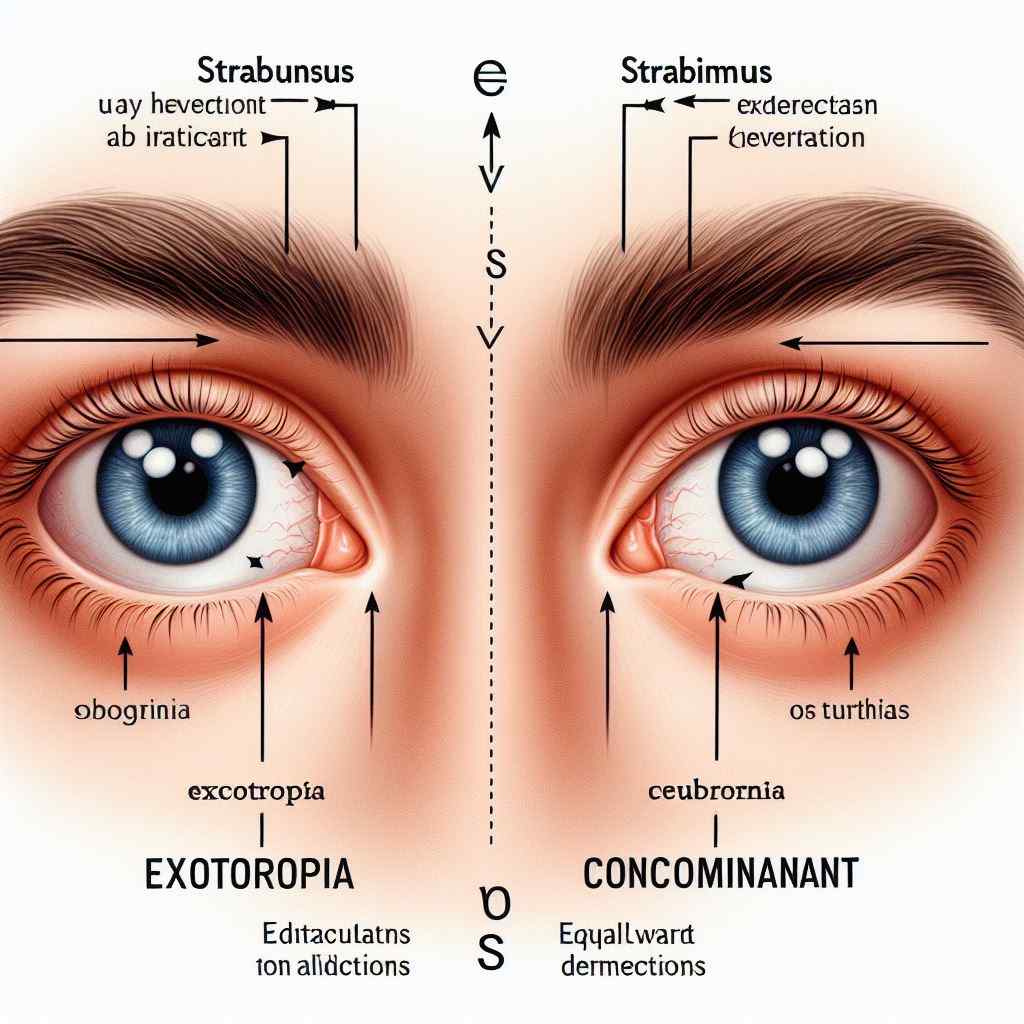
Exploring Concomitant Exotropia in Strabismus
Introduction: Concomitant exotropia is a subtype of strabismus characterized by outward deviation of the eyes, where the angle of deviation remains consistent in all directions of gaze. This article provides a comprehensive examination of concomitant exotropia, encompassing its clinical features, etiology, diagnosis, management, and potential complications.
Clinical Features:
- Consistent Deviation: Concomitant exotropia presents with a stable outward deviation of the eyes, which does not vary with changes in fixation or gaze direction.
- Binocular Vision: Despite the ocular misalignment, individuals with concomitant exotropia may maintain some degree of binocular vision and stereopsis.
- Onset: Concomitant exotropia typically manifests in infancy or early childhood, often becoming noticeable during visual development stages.
- Refractive Errors: Many individuals with concomitant exotropia have associated refractive errors, such as myopia (nearsightedness) or astigmatism, which may influence the severity of the exodeviation.
Etiology:
- Muscular Imbalance: Concomitant exotropia arises from a primary muscular imbalance, with the lateral rectus muscles exerting excessive force relative to the medial rectus muscles.
- Neuromuscular Factors: Neuromuscular abnormalities or dysfunctions may contribute to the development or exacerbation of concomitant exotropia, affecting the coordination and control of ocular movements.
Diagnosis:
- Cover Test: The cover test is a fundamental diagnostic tool used to assess the magnitude and direction of the exodeviation in concomitant exotropia.
- Alternate Cover Test: The alternate cover test helps evaluate binocular vision status and detect any suppression or fixation disparity associated with the exotropia.
- Refraction: A comprehensive refractive assessment is essential to identify and address any significant refractive errors contributing to the exodeviation.
Management:
- Correction of Refractive Errors: Spectacles or contact lenses may be prescribed to correct any refractive errors, optimizing visual acuity and potentially reducing the magnitude of the exotropia.
- Prism Lenses: Prism lenses may be utilized to temporarily alleviate diplopia (double vision) and facilitate binocular fusion, particularly in cases of small-angle exotropia.
- Surgical Intervention: Surgical correction of concomitant exotropia aims to strengthen the weakened medial rectus muscles or weaken the overacting lateral rectus muscles, restoring ocular alignment and binocular vision.
- Vision Therapy: Vision therapy may complement surgical or optical interventions by enhancing ocular motility, binocular fusion, and visual perception through targeted exercises and activities.
Complications:
- Amblyopia: Amblyopia, or lazy eye, may develop as a complication of concomitant exotropia, particularly if the condition is untreated or inadequately managed.
- Binocular Dysfunction: Prolonged misalignment of the eyes in concomitant exotropia may lead to impaired binocular vision, stereopsis, and depth perception.
Conclusion: Concomitant exotropia represents a common form of strabismus characterized by stable outward deviation of the eyes. By employing a multidisciplinary approach that integrates refractive correction, surgical intervention, and vision therapy, ophthalmologists can effectively manage concomitant exotropia and optimize visual outcomes for affected individuals.
Reference Sites:
- American Association for Pediatric Ophthalmology and Strabismus (AAPOS) – https://www.aapos.org/
- American Academy of Ophthalmology (AAO) – https://www.aao.org/
- PubMed Central (PMC) – [Link to relevant research articles and clinical guidelines]
This article aims to deepen understanding of the clinical features, etiology, diagnosis, management, and potential complications of concomitant exotropia, fostering improved care and outcomes for individuals with this condition. Continued research and collaboration within the ophthalmic community are essential for advancing knowledge and refining treatment strategies for concomitant exotropia.


